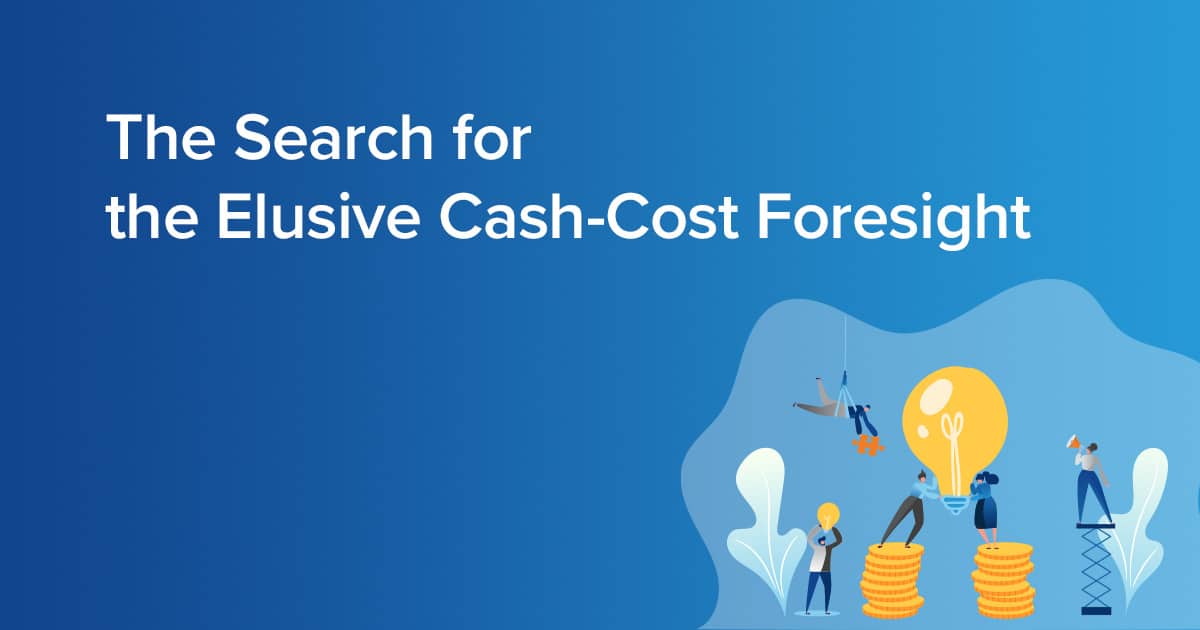
The Search for the Elusive Cash-Cost Foresight
In today’s challenging market landscape, CFOs have struggled to answer basic questions like what is my optimal cost structure and what will my cash position be at any given time? The inability to dig deeper into reports, time-consuming manual verification and uploading of data, and the prevalent use of spreadsheets not designed for collaboration make the answer unnervingly complex.
But as the current market uncertainty continues, CFOs need to refresh their approach to achieving cash and cost transparency. Let’s look at three steps on how to achieve that.
Step 1: Get your data in order
The biggest misconception lies with the quality of financial data. Many CFOs assume that the colossal amount of data they have is of top quality. The truth may be more sobering.
Part of the problem lies with the manual use of spreadsheets. Besides the time consumed, human errors cannot be avoided. Sharing them across different departments by email creates separate copies that can add further data inconsistencies.
Automating the taxing task of entering data into spreadsheets is not the final answer. Neither is uploading consolidated account information that makes drilling down to specific transactions difficult. While live or online spreadsheets address some of the issues, the simple truth is that spreadsheets were never designed for truly collaborative planning.
CFOs and their finance teams need to capture and verify data right at the point of creation. They also need to create a single data repository to act as a single source of truth that CFOs and their various teams — controller, treasury, and financial planning & analytics (FP&A) — can use for analysis and queries. It also tells you the cash position at any moment, allowing the CFO to take proactive actions, such as contingency resourcing.
Step 2: Democratize scenario planning
During a crisis and as the market recovers to a “new normal,” all stakeholders — including line managers and business unit leaders — need to get involved in scenario planning. It should not just be the FP&A team working alone and calling the shots.
Democratizing scenario planning and putting these capabilities in the hands of other departments and divisions allows them to make informed decisions. After all, they are closest to the market, and are privy to shifting trends and market assumptions.
With a single data repository, their data and assumptions can help CFOs and senior management to stop reacting to P&L metric movements. Meanwhile, the resulting collaboration on scenario planning shifts the conversation between the CFOs and the business units which allows CFOs to work as a strategic business partner across the organization.
Step 3: Start small, think big (and not the other way around)
Trying to overhaul the financial and data infrastructure for the sake of better cash and cost visibility may be warranted but is not practical. In today’s uncertain times where protecting cash flow becomes vital, it is a hard pill to swallow. It can also lead to resistance, low adoption, and unwanted workarounds.
At Jedox, we feel it’s much more practical to start smaller. Aim at processes where 80% of time is spent. In our experience, these are manual processes on data preparation and verification. A modern solution that automates those processes can help free up resources to do more analysis on your cash position.
Help to fast track your CFOs in achieving the holy grail of financial planning — integrated financial planning — by addressing the top three tasks, including month-end reporting, forecasting and budgeting.
Conclusion
Attaining cash and cost visibility is a journey, not a means to an end. You need to begin with the fundamentals such as getting the data right. But once you attain this visibility, you are in a better position to gain new foresight.
This will become more critical in the months to come as economies race to recover. Being able to make informed strategic decisions and balance risks with opportunities (like making strategic acquisitions or adding new revenue pipelines) will decide how well your company will fare as the new normal becomes a certainty.
This article was first published on FutureCFO.



